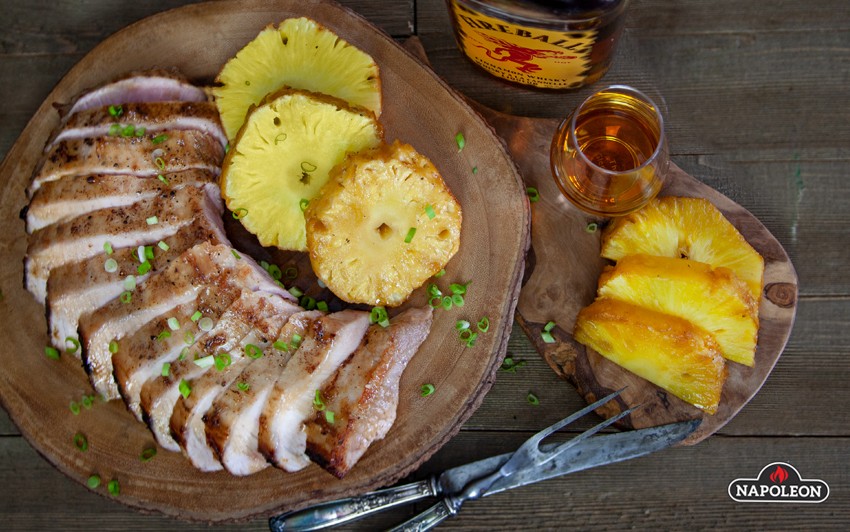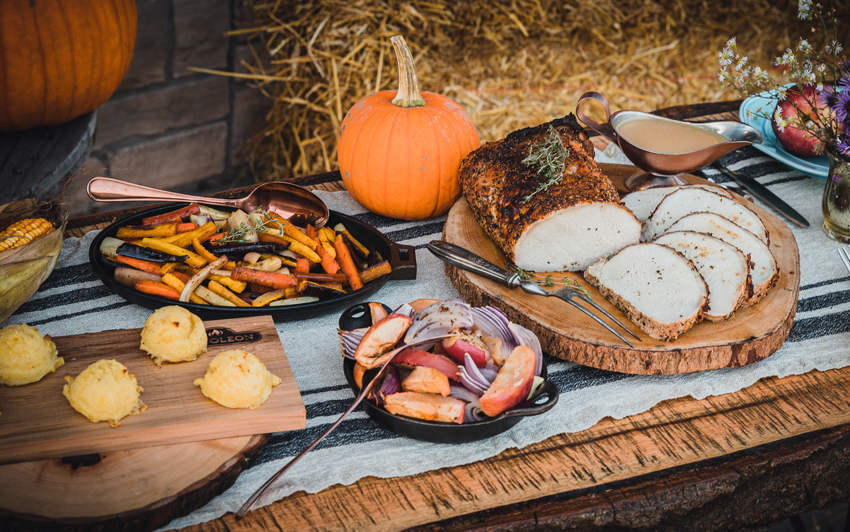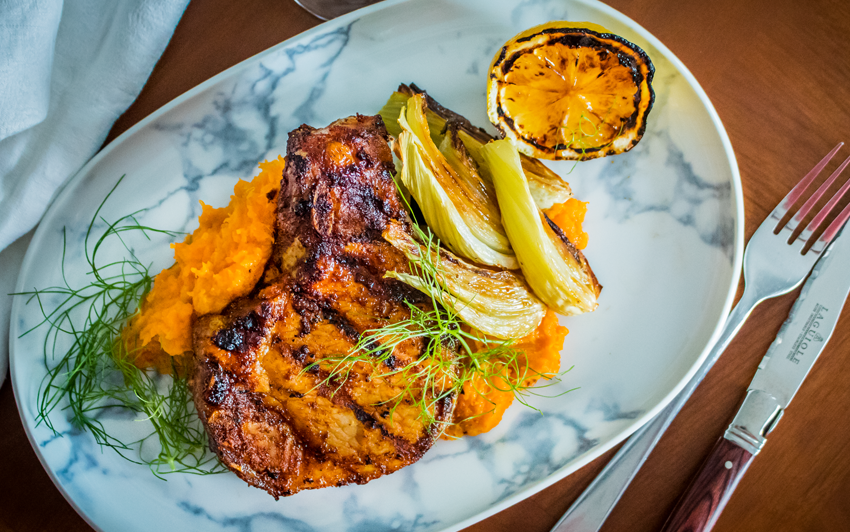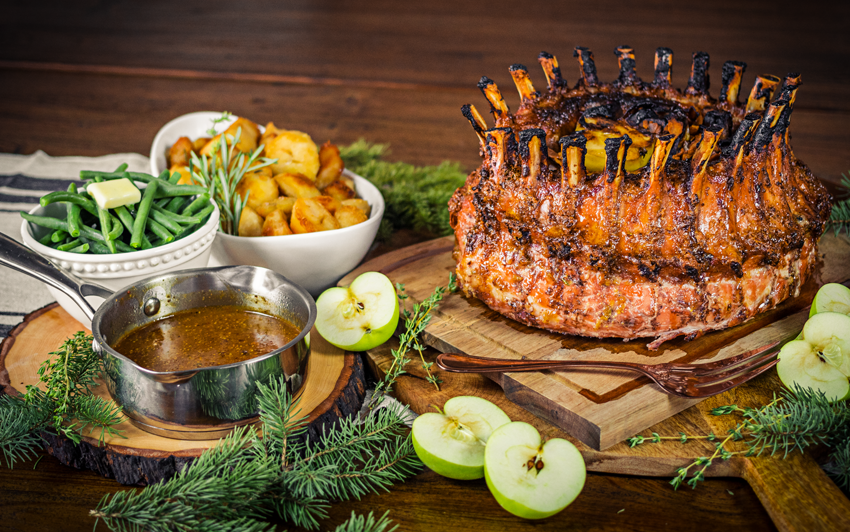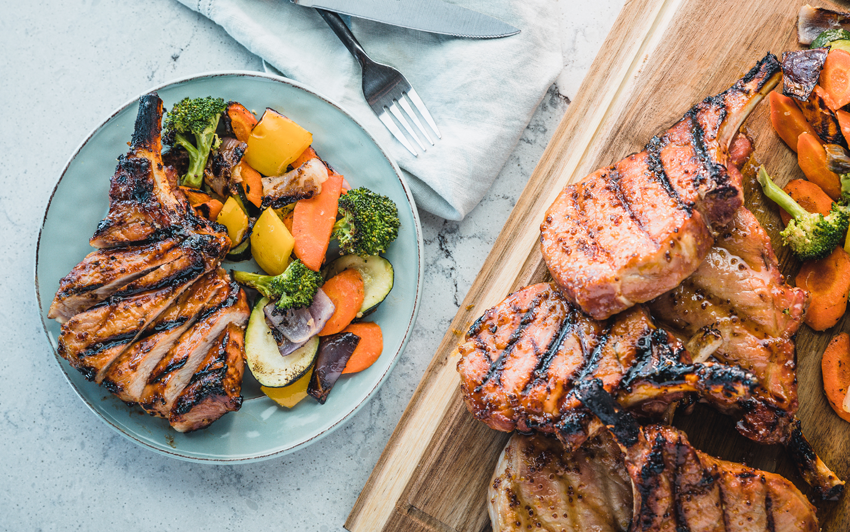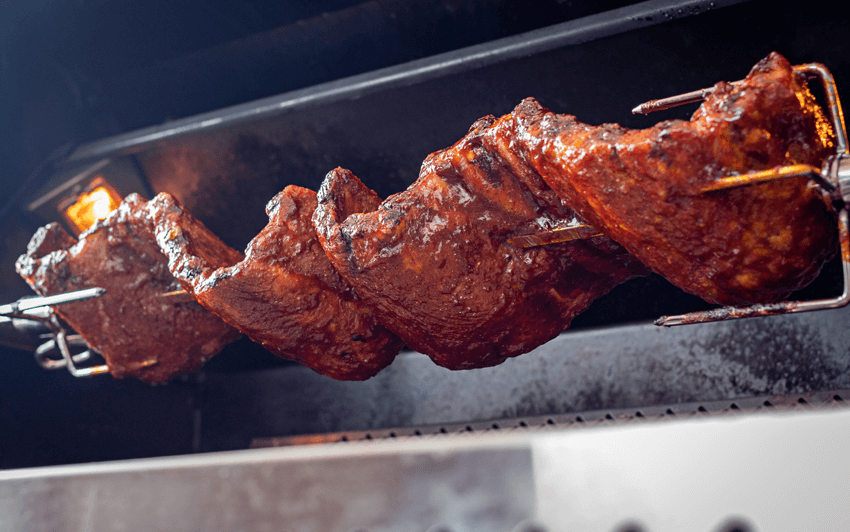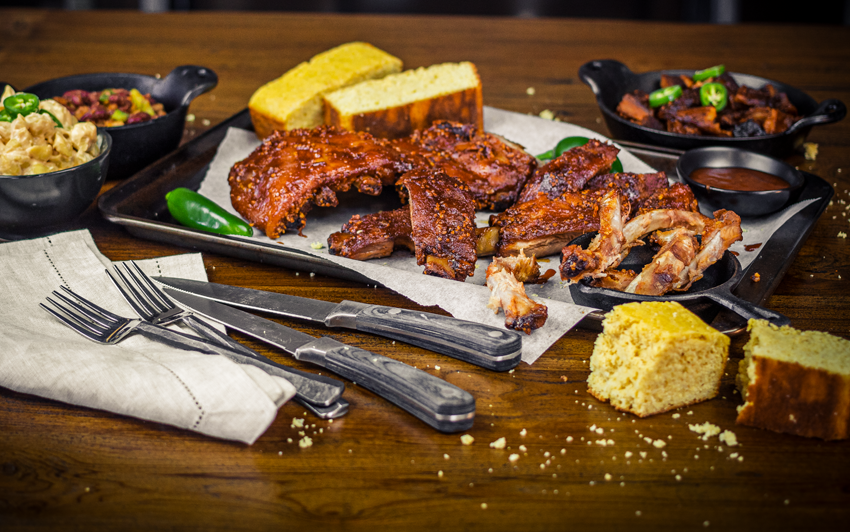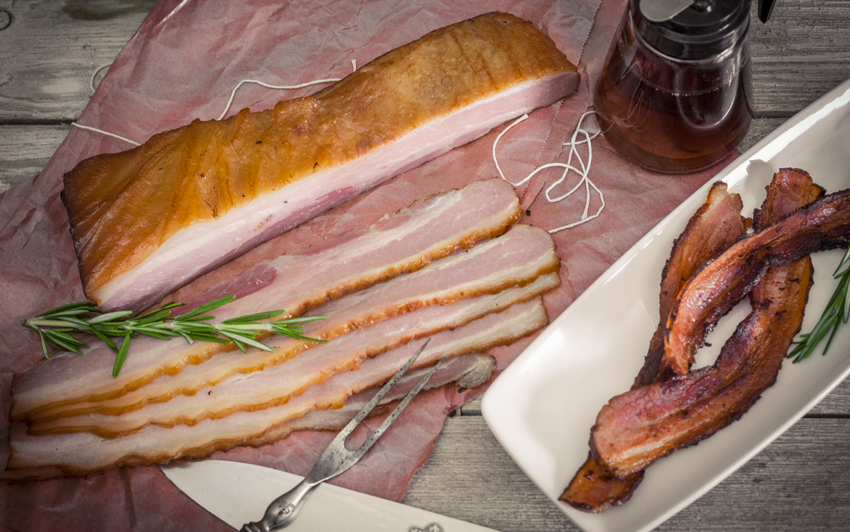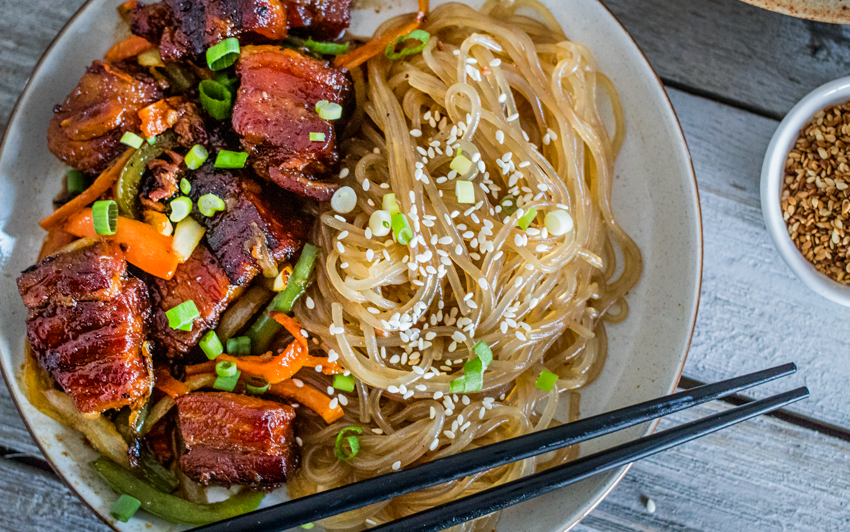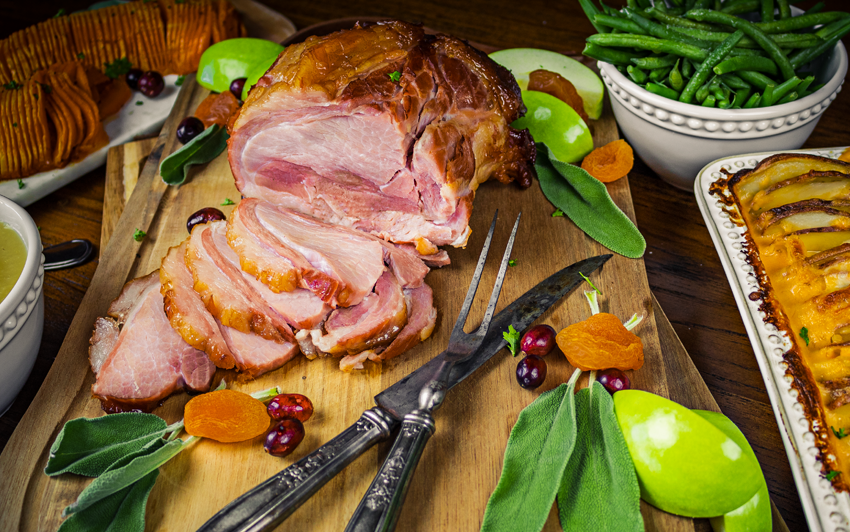
Cuts of Pork & How to Cook Them
There are loads of different cuts of pork and these cuts can vary depending on where you purchase them. There can be variation from city to city, province or state, to even country of origin. Pork tends to pair well with sweet sauces, smokes and seasonings with flavors based in apple, maple and brown sugar. Follow this guide and look for your favorites, along with some recipe inspiration.
Tenderness Scale
When it comes to consuming meat, most mammals that we consume have the same characteristics. The meat located towards the spine of the animal is more tender and lean, while meat from the areas that are used to support and move the animal will be full of collagen and can become tough unless properly cooked.
Different Cuts of Pork & How to Cook/BBQ them
Pork Jowl
The pork jowls is cut from the cheek of the pig. It is a well-marbled piece of meat that resembles pork belly in flavor, texture and fat content, which is why it is often cured and smoked for pork jowl bacon. It can also be made into guanciale and is an excellent addition to sausages thanks to the big flavor that they possess.
Shoulder (Bison Butt)
This 8 to 10 lb. (4.5 kg.) roast is bought bone-in or boneless. When purchased boneless, the shoulder cut is usually divided and encased in netting to ensure that it will stay together. Funnily enough, the best way to tell if a pulled pork shoulder is done is to gently tug on the bone, if it slips right out, it’s pretty much done. This tough cut comes from the front of the pig right behind the neck. Layered in fat, it does well when slow-roasted or smoked to ensure that all of the connective tissue is gently melted, creating a perfect pulled pork.
Picnic Shoulder or Picnic Ham
This is not a ham. Ham (see below) is made from the leg. The picnic shoulder also does not come cured, so you will be buying it fresh. This cut is located directly below the pork shoulder/Boston butt. Another tough cut, it deserves to be lovingly slow-cooked. There is a large fat cap on the picnic shoulder which is ideal for cracklings. This cut is also a great one to grind for use in burgers and sausages.
Pork Loin and Pork Chops
In and around the loin area, just behind the shoulder, along the back of the pig, are where some of the best cuts come from. Leaner, juicier, and most popular for all of your chop and roast needs, the loin plays host to most of the cuts we are familiar with.
The loin itself comes bone-in or out depending on your preferences. It is big and lean and supremely tender. It is where Canadian Bacon (not the film), also known as Peameal Bacon, comes from. The loin parts can become dry if not cooked with love and attention. It is not recommended to cook past 145°F with a rest of at least 5 minutes. This will ensure that everything remains tender and juicy whether it’s a roast or a chop. A good sear for an outside crust followed by a bake or roast will yield the best results when cooking most anything “loin”.
Try this recipe for Fireball Pineapple Grilled Pork Loin
Chops are simply the pork version of a steak. Most chops come from the loin area of a pig. Pork chops are synonymous with buying pork, to begin with, and many chops are cut perpendicular (at a 90-degree angle) to the spine whether it is bone-in or out. True of many loin-area chops, the closer you get to the pork shoulder, the more fat there will be, however, this fat is very tasty and edible. Most thinner chops just need a good sear on both sides, while the thick ones will need a slower finish, whether you just move them off direct heat on the barbecue or put the pan into the oven. Remember not to cook past 145°F with a rest of at least 5 minutes for optimum juiciness.
Blade End Roast
Bone-in or boneless, the blade end roast features many fatty deposits which will provide excellent flavor, along with sections of differently textured meats. This is the section of the loin closest to the shoulder and will benefit from roasting on the barbecue or in the oven so that fat can be rendered out for the ultimate in flavor and tenderness.
Blade Chop
The blade chop is cut from the shoulder and is a bone-in cut full of fat striations that feature differently textured meat. A great barbecuing cut, the blade chop will benefit from tenderizing or marinating before barbecuing.
Center-Cut Loin Roast
Here’s where things can get wild. The center-cut loin is tender and juicy, a nice even shape and, when you get one with the fat cap intact, you are guaranteed a delicious roasted meal. You can also season well and smoke these for something a little different.
Try this recipe for Cider Brined Pork
Center-Cut Loin Chop
The center-cut pork chop is basically the T-Bone of pork. A bone separates the tenderloin and loin. They’re not as succulent as the rib chop because there is less fat on these chops, but they are ideal for a good high heat grill or pan fry.
Sirloin Roast and Chop
The pork sirloin roast is a non-uniform part of the loin that comes off the back end of the loin area near the hip. If you are getting this as a roast, it would be ideal if you can get the butcher to debone and tie this cut so that it is a bit more uniform, though it is rarely left as a roast because of its unwieldy shape, lack of fat and content of several different types of meat. Consisting of the tenderloin, loin, and hipbone, the different meats make cooking the sirloin as a roast a bit of a challenge even when tied. Instead, the sirloin is usually cut into oddly shaped chops that benefit from marinating and high heat searing with a low temperature finish if they are on the thicker side of things.
If pork sirloin is up your alley, try this recipe for Easy Brined Pork Chops
Center-Cut Rib Roast
Consider this the Prime Rib of pork. Center-cut rib roasts contain between 5 and 8 ribs, a nice fat cap and are super tender. You can tie two together for a crown roast of pork and find yourself with the most amazing meal ever. Great for the rotisserie or roasting, try adding a little smoke, just remember not to overcook.
For the ultimate holiday dinner, try this recipe for Crown Roast of Pork
Center-Cut Rib Chop
From the rib section of the loin, this cut has loads of fat, is very flavorful and unlikely to become dry. Butchered to leave the bone in, it runs down the one side in a similar fashion to the beef ribeye and features a fatty layer surrounding the eye of loin in the middle. They are great for grilling or pan-frying, you want to remember to develop that crust on the outside before finishing off the thicker ones away from direct heat.
Sweet honey and tangy mustard make the perfect glaze for these Grilled Rib Chops
Fatback
Fatback is a small section on the back of the pig sometimes left attached to the loin or removed to be turned into salt pork. It can also be ground for adding moisture and flavor to sausages or melted for lard.
Pork Tenderloin
Possibly one of the most popular cuts, aside from the ubiquitous “chop”, is the pork tenderloin. A long and thin cut of meat, the tenderloin is super lean and will cook quickly. They average 1 lb. (just a little less than 0.5 kg) the tenderloin can be sliced into small medallions, left whole, pounded flat or any number of ways. Tenderloin is forgiving like that. It is thin and easy to overcook so keep an eye on it. Before cooking, remember to remove any silverskin for best results.
Sweet maple smoke truly makes this Maple Planked Pork Tenderloin recipe
Ribs
There are three main types of ribs when it comes to the finger lickin’, bone pickin’ food that we love. They are:
(Baby) Back Ribs
Back ribs come from the loin end of the pig and are often more expensive due to a marketing campaign that increased their popularity, and thus the demand for them. They are a tender but lean cut that benefits from slow cooking methods like braising, smoking, and slow roasting, however, they cook faster so you can get to eating sooner.
Use the rotisserie to cook the ribs on the barbecue, these Rotisserie Back Ribs are amazing.
Spareribs
Spareribs come from the belly side of a pig, think bacon on the bone, which means that they are thick and juicy, and a lot fattier than their other counterparts. These ribs can come “regular” with the breastbone and cartilage or St. Louis style where that is removed and the ribs have been squared up. These ribs feature loads of marbling which means that they are incredibly flavorful. A full rack can weigh between 3 and 5 lbs. (up to 2.3 kg.). Again, braising, smoking and slow roasting are the best way to make the most of this meat.
Smoke and ribs pair perfectly together. Try this recipe for Rotisserie Smoked Spareribs
Ribs are possibly one of the best barbecued cuts of pork there are, but do you know the best way to prepare ribs? One of the secrets to great ribs is cooking them past the typical “done” temperature. Find out why ribs should be cooked past done and how to know when they’re ready in this article.
Country Style Spareribs
These ribs come from the upper side of the ribcage, just below the picnic shoulder, close to the fatty, loin end of the pig. These are often separated into individual ribs before purchase. They come with loads of great meat, but the bone makes them less ideal for the traditional rib eating and more ideal for a braise or slow smoke with the intent of using them in stew.
Pork Belly
This is where bacon comes from. Pork belly is a delicious, savory, fatty cut that can be used in a great many recipes. Roasted, cured, smoked or braised, pork belly is perfect for a long-haul cook. This ensures that the fat gets rendered down while the meat remains succulent. Meals of pork belly are very rich and need to be served with starchy things to give your mouth a break. Bread, rice, noodles, potatoes, these things will ensure you don’t get fatigued by the nature of cooked pork belly (except for bacon) while still enjoying it to the maximum.
Cure and smoke your own bacon with this recipe for Rosemary Sugar Cured Bacon
Succulent doesn’t even begin to describe this recipe for Braised Pork Belly on the BBQ
The Rear Leg
Most of the time you will find the leg has been brined or cured and smoked to become a ham. Many people feel that it’s not really ham if it doesn’t come from the rear leg, while others feel that it is the treatment process of some form of cure and smoking that makes the cut a ham. The rear leg is rarely found fresh but will sometimes be labeled as a “fresh ham” or shank end. The rear leg is on the leaner side of things but is very flavorful and serves a crowd. A fresh leg will benefit from a good brining and it is suggested that you roast it slowly over the course of 4+ hours.
Imagine serving a ham that you cured and smoked yourself, find out how with this recipe for Homemade Cured and Smoked Ham.
Hock
The hock is below the shoulder (front leg) and leg (ham-rear) stopping just above the ankle/hoof. These are often brined or cured and smoked. They’re great for adding flavor to beans. Sometimes it is fresh and can be treated like the Osso Bucco cut of beef, making it a great addition to the braising pot.
Trotters
Pig’s feet or trotters are the hooves and sometimes knuckles of the pig. They are mostly cartilage with little meat but are ideal for adding a flavor infusion to your favorite soup or stock. They are a great source of collagen and thus gelatin when slowly cooked, which is why they are the secret weapon of soups and stocks. They can also be smoked, cured, and even pickled, and many consider them a delicacy.
There are many more cuts that were not discussed in this article, sometimes too numerous to get. These include the snout, ears, tail, and even the anus and offal. What is your favorite cut of pork and what do you barbecue with these cuts? Let us know in the comments or tell us about your favorite cuts of pork and how you cook them on our social pages like Instagram and Facebook using the hashtags #PorkCutsOnTheQ, #NapoleonGrill and #NapoleonEats.
